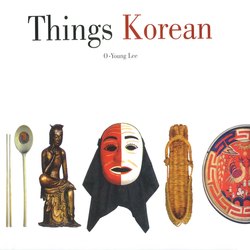Читать книгу Things Korean - O-Young Lee - Страница 16
На сайте Литреса книга снята с продажи.
ОглавлениеThe Luster of Lacquer Inlay
Najonchilgi
All sculpture projects itself. It does not lay there on a two-dimensional surface. Even a work of relief achieves its beauty by projecting outward from a plane surface. In this sense, as a matter of fact, the relief can be regarded as the progenitor of sculpture. There is no form of art which requires the bright light of day more than sculpture, because light provides shadow, and shadow, in turn, provides sculpture's third dimension.
A gem is a kind of sculpture, in that it is a three-dimensional work of beauty. The gem, however, wants to hide from the light of day. It does not project itself, it withdraws into itself. In principle, the deeper from the earth a gem comes, the more valuable it is. And even when it is dug up and worked on, no matter what kind of material it is set in, it must be set deep for the design of the entire piece to work.
Inlay is sculpture, akin to the relief, and it works together with the gem to effect a special composite beauty. When the gem embeds itself deep in a work of inlay the total piece obtains the full benefit of the gem, and only with this does the gem fully justify its presence in the work. The treasure chest with its fortune of gems, in fact, is always hidden in the deepest recesses of a cave, or in the inaccessible code of a secret map.
Whether a ruby in the crown of a king or a sapphire in his ring, the gem achieves its value only when resting deep within the folds of its gold setting. If it falls out, all there is left is a gaping hole, which renders both gem and jewelry useless.
The gem has a cousin in mother-of-pearl. This treasure gets its gem-like property from having hidden in the muddy depths of the sea. The mollusk clam which nurtured it does not have to be bearing an expensive pearl for it to produce mother-of-pearl. This inner layer of any mollusk has the nature of a gem. And like the gem, the beauty of mother-of-pearl is not in any brilliance it projects. Its beauty is in the way it subtly suffuses the work of inlay with its soft iridescence from deep inside.
No matter how small the gem, its value surpasses that of the gold it is set in. This is because the function of the gold is no more than that of soil, the gem's original home, in providing a second home for the gem. The lacquered surface of inlay performs the same role for mother-of-pearl. In order for the mother-of-pearl to give life to its setting, the setting itself has to provide the depth of the ocean's muddy floor.
In Korea we keep our clothes in a wardrobe of mother-of-pearl inlay. Its mother-of-pearl, no matter how brightly it were to shine, could never approach, nor would it ever want to, the shine of its would-be imposter glass. After all, it is a gem, and gems have a quiet luster. And so the desire of the luster in this gem is to lie in darkness. When we look at this inlay wardrobe in the deepest and darkest corner of the room, we can see its intrinsic worth. In contrast to a piece of sculpture, in the daylight of open space the wardrobe of mother-of-pearl inlay would lose its special quality.
That luster of mother-of-pearl inlay in the darkness—it is made with Korean hands and is the aesthetic of a culture which cherishes the mother-of-pearl. As the mother-of-pearl is given its luster by the iridescent inner layer of the mollusk, our culture has been granted the spirit and skill of setting luster into the darkness of the night.
